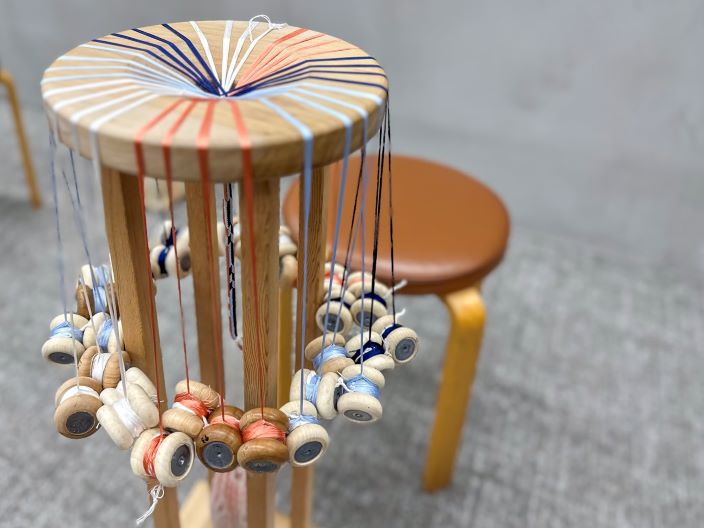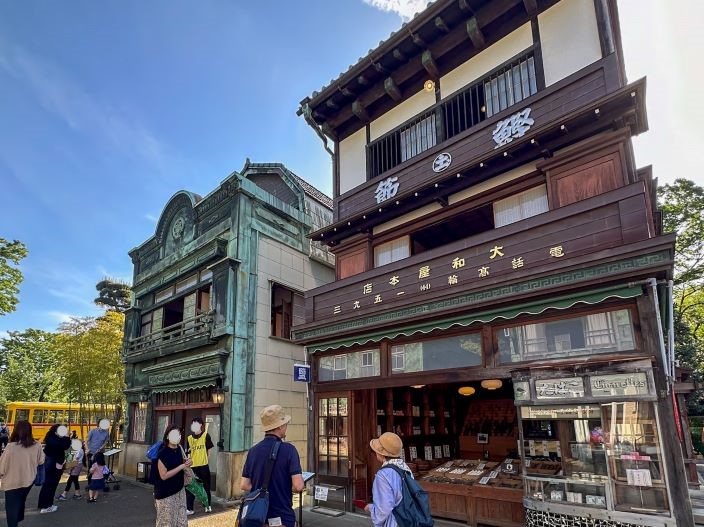Kumihimo (Braided Cords)” is one of Japanese traditional crafts. It’s often used for Obijime which secures the kimono obi (belt) – have you ever seen it?
In the hit animated film “Your Name. (2016 / Directed by Makoto Shinkai)”, the main characters wear kumihimo as bracelets and hair ornaments, and it was depicted as an important item that ties their destinies together.
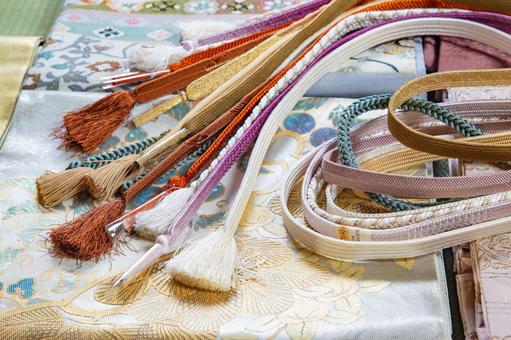
What is Kumihimo?
A craft that has developed uniquely and uniquely over the past 1,400 years, kumihimo is a cord-like object made by crossing and combining three to sometimes as many as 140 strands of threads.
“Kumihimo” is essentially different from ‘weaving’, in which yarns are combined vertically and horizontally to create a flat surface, and from ‘knitting’, in which yarns are intertwined or knotted together to create a shape.
If weaving and painting create two-dimensional works, while architecture and sculpture create three-dimensional works, kumihimo is a craft that creates one-dimensional “lines” and the most primitive forms. However, if you look closely, you will find countless dimensions intertwined three-dimensionally embedded in a single line, which is the most distinctive feature of kumihimo.
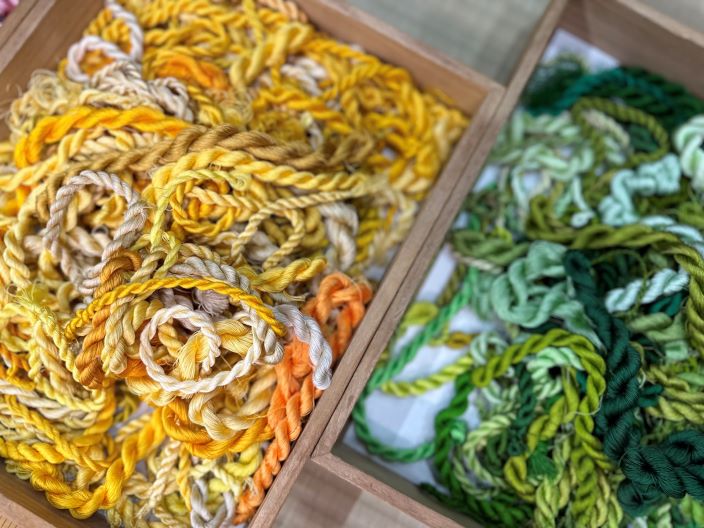
There are many patterns of braiding, so even if the same color threads are used, the braided cords can be made differently depending on the way they are braided and arranged. The wonderful thing about braided cords is that they can be made softer or tighter depending on the shape and structure of the cord, as well as the amount of force used when making the cord.
For example, if you need “a cord to wrap sutra scrolls,” use a soft cord that will not damage Japanese paper (washi), if you need to “wear armor or costume,” use a cord with high elasticity and suitable for tying, and if you need to use “a cord for a sword cord or box cord,” use a tightly braided cord that will not break and is strong (because a soft cord will loosen quickly and the sword will fall off). Thus, kumihimo is a highly practical item.
It is also a craft with excellent aesthetic and decorative qualities by expressing people’s thoughts as designs.
The History of Kumihimo
Braided cords were introduced from China and Korea as accessories for Buddhist ritual utensils with the arrival of Buddhism from the Asuka to the Nara periods. Most of the braided cords in the early days of the introduction were made in a simple way, as seen in the treasures of Horyuji Temple and the Shosoin Repository.
In the Heian period (794-1185), aristocrats began to adopt the technique and pursued more diverse expressions. It was also during this period that the technique of danzome (tie-dyeing) was developed, combining multiple previous techniques to create new combinations. As the period passed from the Heian to the Kamakura period, more complex techniques were used to make strings for gorgeous armor, sutra scrolls, and Mikoshi “portable shrines”.
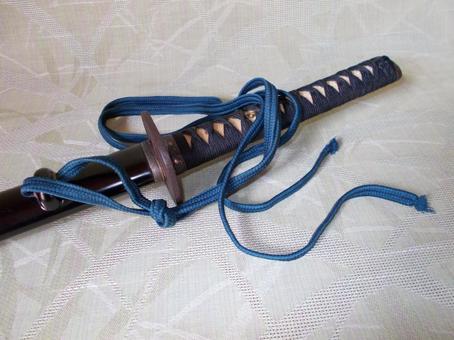
In the Edo period (1603-1867), the culture of kumihimo spreaded to the masses, and it came to be used mainly as obi-jime for women’s kimonos.
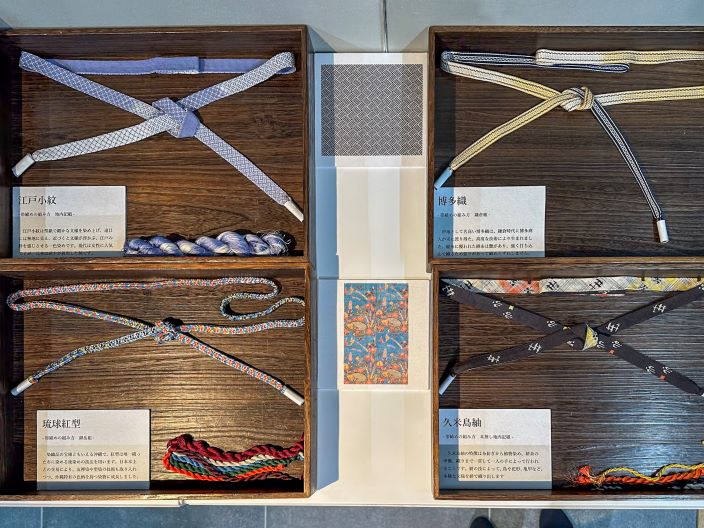
How to make Kumihimo?
Traditional braided cords are almost always made from silk threads.
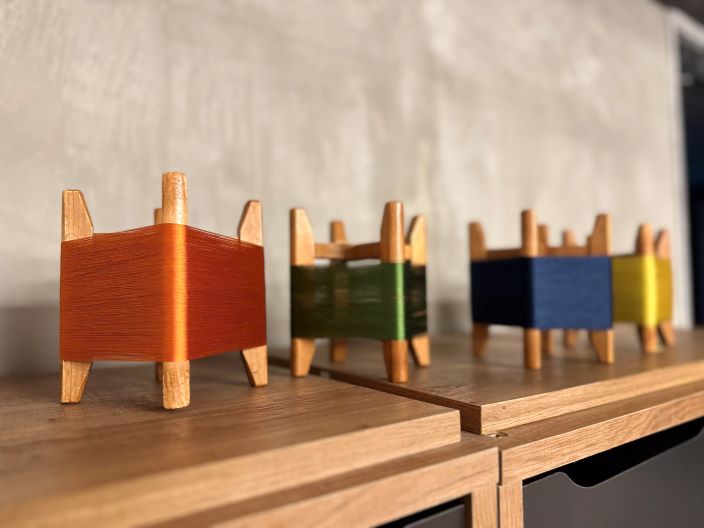
It is made by crossing multiple strings diagonally according to a certain rule by fixing the ends of the combination. The cross section of the braid is classified into Marugumi (round), Kakugumi (square) and Hiragumi (flat) braids according to its shape.
Sometimes, braiding is done by hand alone, and at other times, using a stand. There are several types of stands: the square stand (Kakudai) is the most basic and is used exclusively for marugumi (round), the round stand (Marudai) can be used for various types of braiding and is easy for beginners to get used to, and the high stand (Takadai) can be used for more complicated braiding and is mainly used for hiragumi (flat).
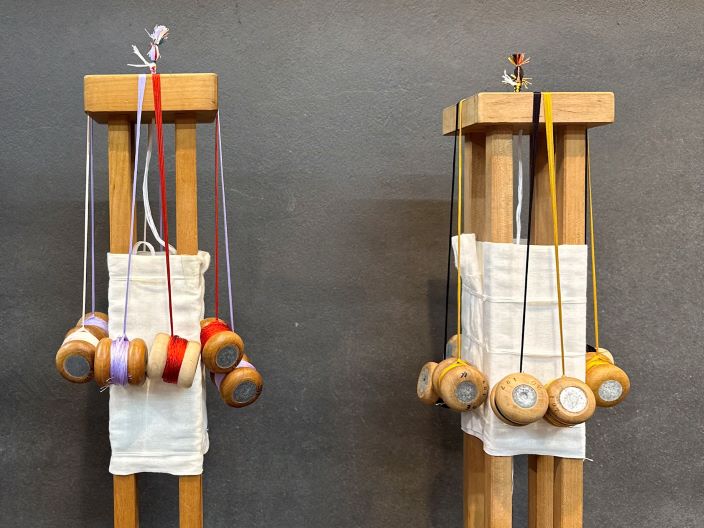
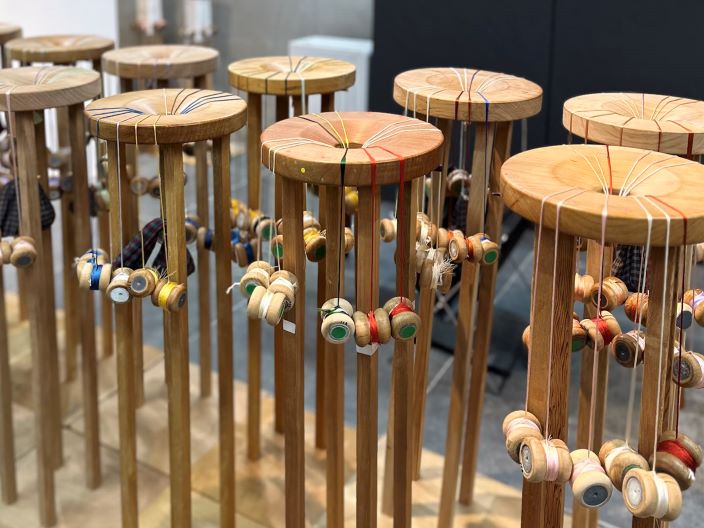
The strings are placed radially from the center of the stand, and a lovely clang-clang sound is heard as the strings are moved.
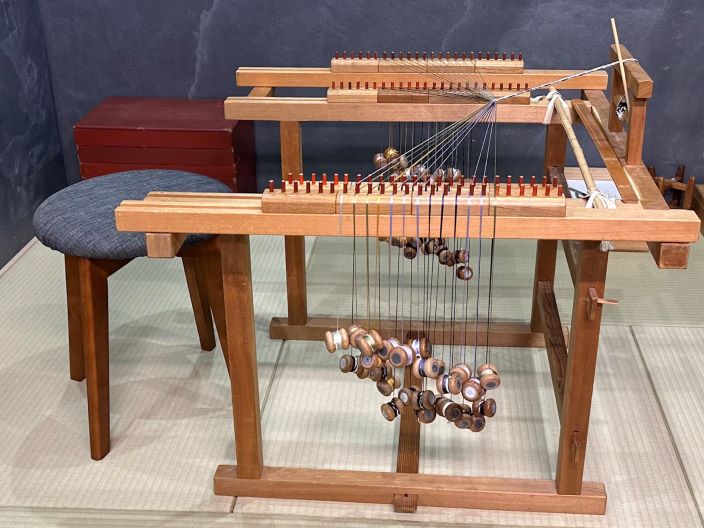
It was invented in the Edo period. Basically, it draws a dot-like pattern by producing two colors, one on the front and one on the back.
The strings are placed on a stand and crossed in a regular pattern. A weighted ball is attached to the end of the threads, which is very cute.
The other day, I had a chance to experience kumihimo, so here is a little report on that as well.
The challenge is the simple “Nara-gumi” method of braiding. This technique has been used since the time when kumi-himo was introduced from the continent. Twelve strings from the center of the round stand are crossed and braided together. After choosing my favorite colored threads from the already set up marudai with nice color combinations, now ready to start!
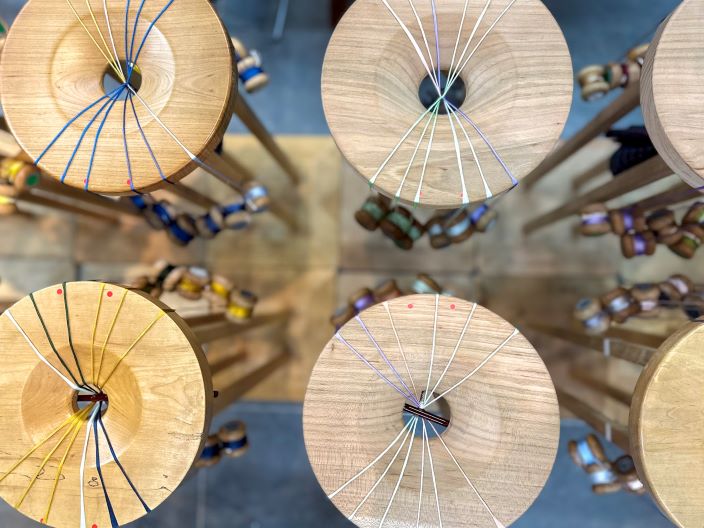
It is important to set the strings in place and assemble them with a certain amount of force, and to make it easier to understand, they provided red stickers to indicate where the strings should be placed.
After being taught the order in which to move the threads for Nara-gumi, the only thing left to do is to move the strings mindlessly. The key to a beautiful work is to be “mindless,” but until learning the order, it is difficult to do so. Once I got used to it, my fingers seemed to move on their own, which was interesting.
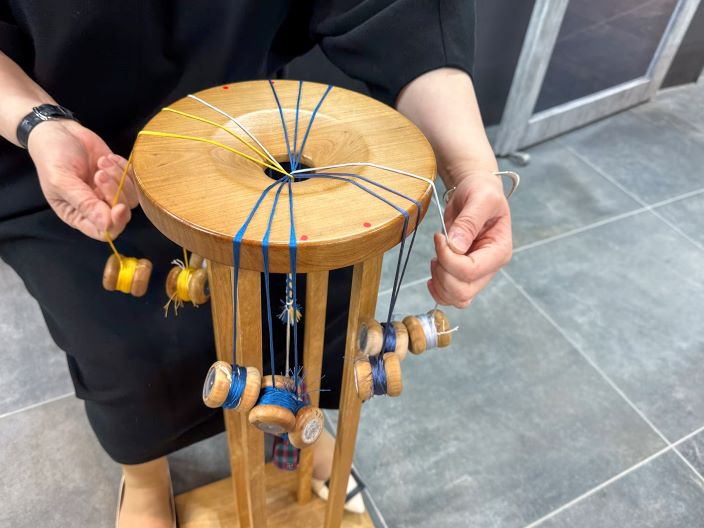
The braided kumi-yarn comes out in a downward direction.

The drawstring attached to the end of the braid is a weight. When you want to make the braid tight, do you make the weight heavier or lighter? Or do you make it lighter?
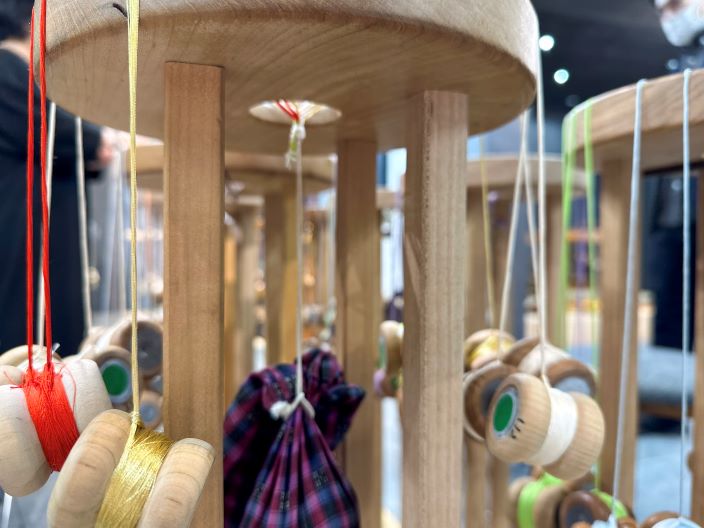
The correct answer is “make it lighter”. Since the strength of the weight pulling the string is lightened, the surrounding weighted balls are pulled more strongly, resulting in a tighter finish. So, in addition to the patterns of braiding, the finish can also be changed by adjusting the tools.
Several dozen minutes of assembly like this…when the desired length is reached, it is completed.
This time, we used 12 strings, which are “a bundle of multiple silk threads”. If left unchecked, the thin bundles will spread out, and the finished product will feel rough to the touch. So it is important to twist the string by spinning the weighted ball from time to time. It may look easy, but it was a very difficult process. When I looked at the table at the end of the process, I found that the twists had been beautifully lost…. It is hard to believe that sometimes more than 100 pieces were used to assemble it. I am in awe of the craftsmen’s skillful techniques.
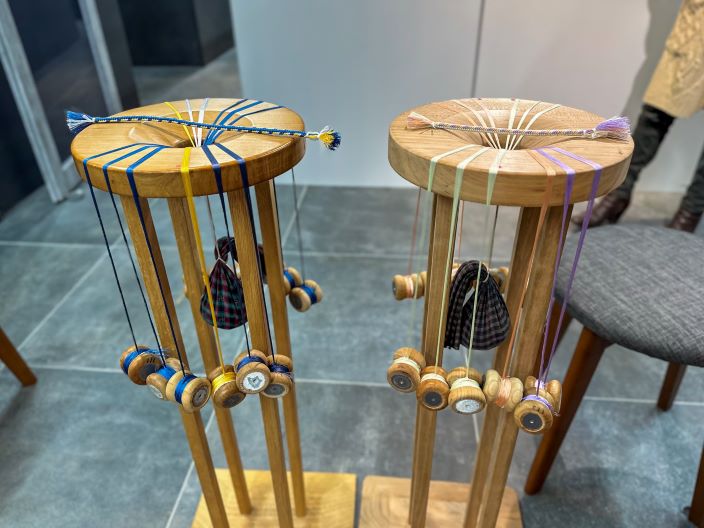
Well, I am very happy with the soft colors of the key pieces. I had this finished into a bracelet for my daughter.

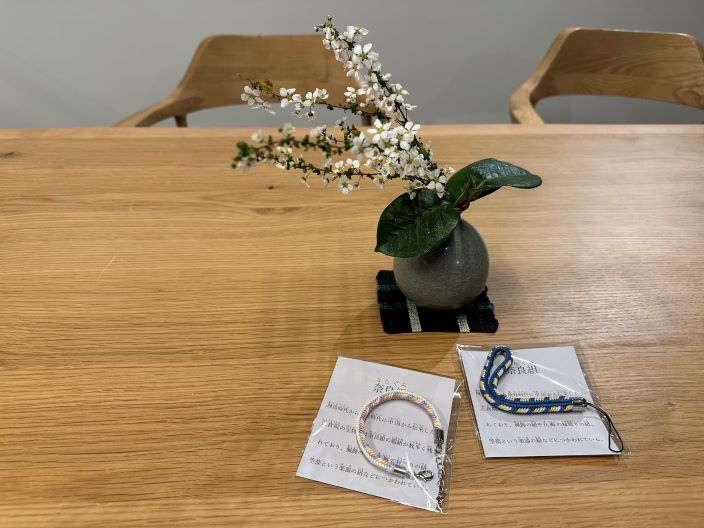
Diversified Kumihimo
Since the Edo period (1603-1868), braided cords have played a major role as obi-jime for women’s kimonos, but in recent years, other uses have also been explored. It has been transformed into neckties and cufflinks that go well with Western clothing, accessories such as earrings and bracelets, neck straps for daily use, shoe laces, watch belts, and more.
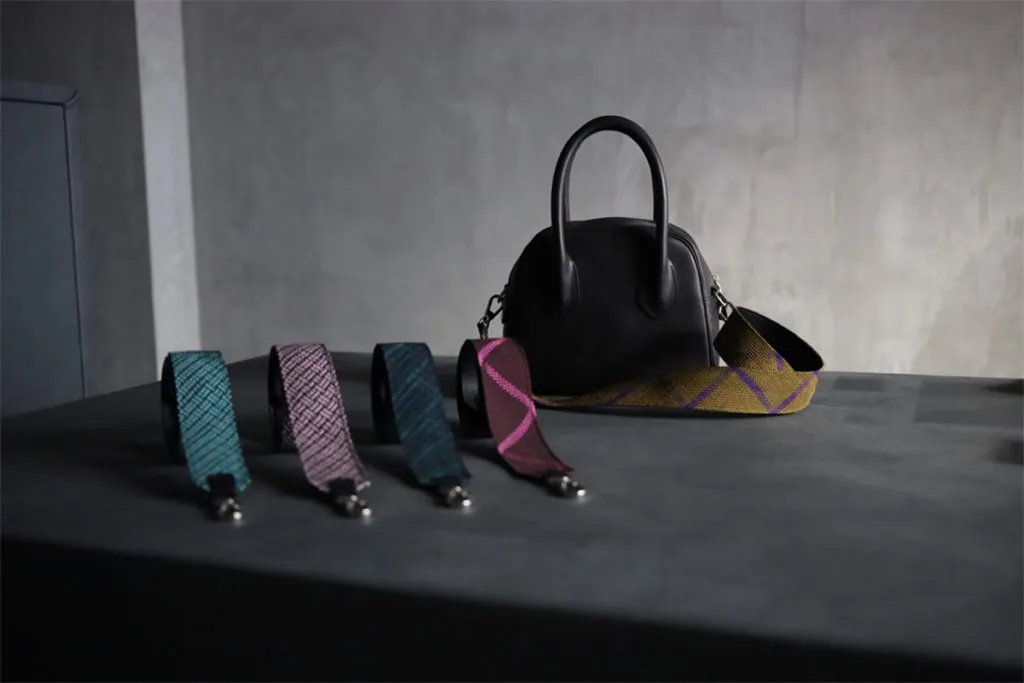
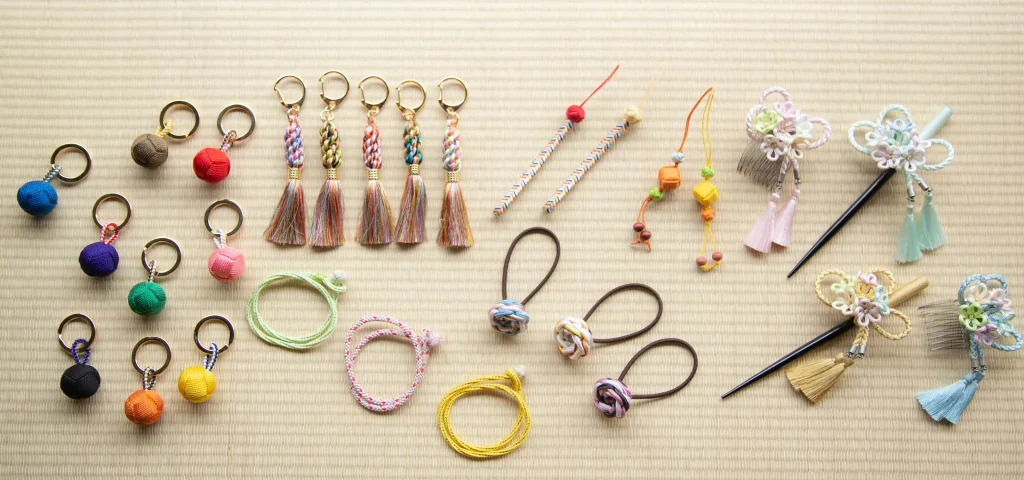
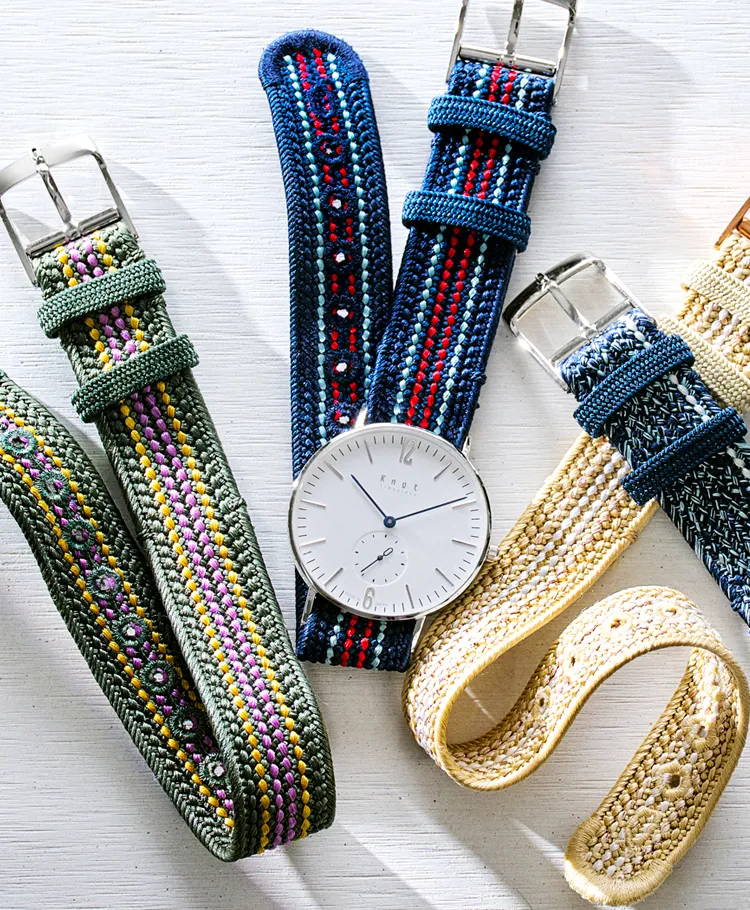
Luxury brand Hermès also seems to be paying attention to kumi-himo, as shown in its new home collection presented at Milan Design Week 2024 in April 2024, the “Tresage Ekestre” tableware collection, which symbolizes the bond between horse and rider, features motifs of bridles and braided cords used in harness making.
In addition, countless braided cords hang from the ceiling of Hermes Daimaru Shinsaibashi, and at Hermes Isetan Shinjuku, the women’s shoe corner is decorated with braided cords, reminding us that braided cords are highly valuable as art.
We introduced “Kumihimo,” a wonderful traditional Japanese craft. Hope you will be interested in this wonderful traditional Japanese craft

